- Home
- Susan Hill
Jacob's Room Is Full of Books: A Year of Reading Page 2
Jacob's Room Is Full of Books: A Year of Reading Read online
Page 2
She was a woman tormented by her own temperament, by her rages, storms of tears, hysterical outbursts, jealousies, passionate, possessive love affairs with other women; a woman who complained about the interruptions from her readers, her friends, the daily domestic routine and said all she longed for was to be left alone to her art. But when she was, she was lonely and miserable and craved company, as she had always craved attention and affection. Her well was so empty, no one could ever fill it.
But I am enjoying this one of her journals all the same. She has an eye for beauty, an ability to describe a sky, a snow storm, a plant, a bird, a wild cat, the antics of her parrot Punch, so that one is there with her, and she was respectful of her country neighbours, whose lives were rough and poor and harsh but who had a dignity and a pride in manual work and an honesty which she valued.
Her best book is The House by the Sea, which will remain loved and understood when all the rest of her work has gone to oblivion. A salutary thought for any writer of any kind who takes themselves too seriously.
THE LAST DAY OF JANUARY, apropos of which a friend said, ‘Now that can’t be bad.’ Yes and no. Yes, we are on the right side of the year – a little lighter in the mornings and evenings, more birds singing. And yet February and March and often April (‘the cruel-lest month’) can disappoint, and even May can be wet and windy and cold.
There is a way to go yet. The sedge is still withered from the lake.
YESTERDAY, I SAW a woman, bundled up in jackets and scarves and woolly hats, walking along the verge of a road picking up litter. She had a stick with a spike on the end of it and a black sack. But what a thankless task! No sooner has she gone along a stretch gathering stray papers and plastic pots and empty take-away containers than a few dozen thoughtless motorists speed by, windows open, the wind blows, and she has to start again. And then I remembered Ethel and a whole world clicked back into view.
Ethel was a friend of my aunt Doreen. They had been at university together – an unusual thing in itself for young women in the 1920s – and had both gone into teaching English. My aunt married – twice, as her first husband died very young. Ethel did not. When we lived in the Cotswolds, Doreen came to stay one summer and we were driving through a village a few miles from ours when she said, ‘But this is where Ethel lives! I haven’t seen her for thirty years.’
With the help of only her name (villages being helpful places), we quickly tracked Ethel down. She had retired from teaching English at Cheltenham Ladies’ College many years earlier, and now she spent her time painting very good watercolours – and picking up litter. She went round the village and nearby lanes for two hours a day, with a black sack and a stick with a prong on the end.
After that, she and my aunt would spend a day together whenever Doreen came to stay, and after Doreen died and I was driving through Ethel’s village, I saw her a few times and stopped to speak. Once, she invited me in for coffee. She was a very private, shy woman and I don’t think she was altogether comfortable around people. But she did talk to me over that coffee about the Ladies’ College in her day and particularly about the extremely good English department. I knew that the poet U. A. Fanthorpe had taught there and asked Ethel if she had known her. She looked awkward.
‘She was a wonderful teacher. I liked her very much. I had the utmost respect for her. But then …’
Then?
She was silent for a moment, not looking at me. ‘Then – she left. It was all very sad. A scandal, I’m afraid. They were both greatly missed. But of course they had no alternative.’
I had no idea, then, what she was talking about. I admired UA, as she was known, as a very fine poet indeed, but I knew little about her. So I looked a few things up, followed some links, and then, as soon as it came out, bought a copy of the book of poems she co-wrote with Rosie Bailey, From Me to You.
The poems are by them both, but they do not tell the reader which of them wrote which – although it’s sometimes possible to guess, of course.
U. A. Fanthorpe and Rosie Bailey met at Cheltenham Ladies’ College, and worked alongside one another in the English department for seven years before, as they put it in the introduction to the book, ‘We discovered that we liked one another.’
Liked was of course ‘loved’ and when they became partners, they left the school, Rosie to teach in a university, but UA, unexpectedly, to become a secretary/receptionist in a psychiatric hospital. It was then that she started to write poems in earnest. Rosie wrote them, too, though when she began is not clear. But it was UA who was the great poet.
They bought a house together, first in, of all places, Merthyr Tydfil, before moving to south Gloucestershire, where they were to live until UA’s death in 2009. They seem to have been the perfectly matched married couple. The poems in this, their only joint collection, are a joy, and all of them good. They are tender, witty, warm, loving, revealing about everyday life – their cat, their dog, their home, their neighbours, the village, their public lives, their friends … but most of all about each other.
I remember two things about them, in among all the rest. One is the poem 20.VIII.2003 about what birthday present the poet would, in a perfect world, give her partner – but cannot give because it includes items like ‘the county of Devon, sea, valley, hill and moor-land’, and so the present is a bird feeder. The other is an observation about the party who sometimes walk the parish boundary.
There is always one,
Striding ahead with superior calves …
I see that ‘one’ on the footpaths around here every day. It’s the ‘superior calves …’
Look at their photographs. UA was a plump and homely looking woman who wore tweed suits and nice blouses with pussycat bows – absolutely what one of my English teachers wore, and generations of them before and, for a short time, after her. She sported very large, owl-like specs and a slightly bemused expression.
And Rosie Bailey. Look at her face alone and you see that it is soft and gentle. Kind. But she has cropped hair, wears a man’s suit, leather belts, man’s shoes, always – and I do mean ‘man’s’. One sees almost no women like this now, but the lesbian who could indeed, at first sight, be a man, who dressed and walked and talked like one, was a familiar figure from the 1920s on to the – what, 1970s? Especially among writers and artists. And why not? But it puzzles me that someone like U. A. Fanthorpe’s partner felt that she had to look like a man. Maybe she didn’t. Maybe that is just what she preferred.
U. A. Fanthorpe was a great poet, of that I have no doubt. The volume of her New and Collected Poems runs to 500 pages. She was interested in most things – the landscape of England and of the human heart. History. The way things seemed, as against the way they were. Christianity. The Church. Domestic life. Cats. Dogs. Birds. The garden. Whisky. Painters … The list is long.
I wish I had known her. I wish their partnership had not been, in its early days, some sort of scandal. Still, at least they lived happily ever after, until UA’s death, and her literary star rides high in the firmament.
I get out the New and Collected Poems. ‘For sixteen years … I’d been a teacher, dedicated to the cause of the un-split infinitive and the judicious use of the semi-colon,’ she writes in her preface. Carol Ann Duffy provides a short introduction which pinpoints two of UA’s most important qualities:
This subtly subversive poet … understood the re-imagining of our traditions, the importance of the energy between the past and the present, particularly in poetry.
And
[She] possessed an endearing patriotism that was founded lastingly on love, not shakily on superiority.
Now there’s a sentence to make one think. It could do to be written up in letters of gold somewhere, to teach those who deride patriotism and assume that it is always and everywhere A Bad Thing.
The collected poems are many. Surprising, looking through the fat volume, to see that UA only started writing them in 1974. She wasted too many years on the un-split infinitive.
>
Those by both her and Rosie Bailey, in From Me to You, are love poems and there is the crux of matter. As Ethel said, it was a quiet scandal though, Heaven knows, plenty of women schoolteachers lived together, in one capacity or another, without there being any raised eyebrows. There were certainly a couple of them at my grammar school. We giggled a bit and speculated on the colour of their satin bedspread, but I don’t think anyone was shocked.
Once they had left Cheltenham Ladies’ College, their lives fell into place with ease and they were rarely apart until UA’s death. They were familiar figures on the poetry-reading circuit, much loved and apparently very accomplished in different ways, one complementing the other. I wish I had been to one of those evenings, though in general I hate having poetry read to me, especially ‘with expression’ – worst of all by actors but, almost as embarrassingly, by the poets themselves. Makes the toes curl.
How full of truth and love these love poems seem to be. They are gentle, committed poems. Nothing OTT about them, no jewelled imagery, no embarrassment of expression. I love them. Best-known, of course, is ‘Atlas’, which has become a cliché of the civil wedding …
There is a kind of love called maintenance.
Which stores the WD40 and knows when to use it;
But I think my favourite lines are:
I turn over pages, you say,
Louder than any woman in Europe.
U. A. Fanthorpe died of cancer. She and Rosie Bailey cemented their relationship of so many years with a civil partnership not long before she was taken ill. They both wore white – UA, a smart skirt suit; Rosie, as ever, a man’s white trousers, shirt and jacket. They look comfortably settled and rather surprised, in the only photograph I have seen.
I wonder what Ethel would have thought. But I think Ethel must have died some time ago. For a year before I moved away from the Cotswolds, I had not seen her, walking the village bounds, picking up litter, a small, very bent figure, furious at the messy, thoughtless ways of more recent generations to whom no parent ever said, ‘Now pick that up!’
‘PLEASE GIVE ME some idea of how you write?’
‘I want to write a novel. Where do I begin?’
‘I am doing an MA in Creative Writing. Please would you kindly tell me how many hours a day you write and how many drafts you do of a novel? I am finding that after about Draft 7 my work feels stale. Should that happen? Does it happen to you?’
‘Would you consider running an online CW course? Or at least would you take on a few MA pupils and give them some guidance as to how exactly they should work, based on how you do it?’
And so on. They come in by email and via the website, but when I did a lot of lit fests and other book events the most-asked questions were also of this kind. People aspire to write – a very great many people – and they want help, to be told the tricks of the trade, given advice about how it is done/how they should do it. I think a lot of enquirers feel that if they knew how established/published writers work they would have the keys to the kingdom.
But there are no rules – there really are none. You do what you want, what feels right for you. I am the last writer to follow in this respect, any creative writing tutor would say so. I have let slip a few remarks about my way of working on the odd occasion when I have talked to MA students and not only are they surprised, even shocked, by what I have said – their tutors are horrified. Their method is to ask for draft after draft to be corrected, re-written, changed, after the previous ones have been read and ‘corrected’. How else would they spend/justify their time and salaries? All of this may work for some, but it would not work for me. I make some notes – sometimes a lot, more often just a few – and they are very random and disconnected. They are just my own aides-memoire. I think a lot. I probably do more thinking about a book than anything else, which is handy because you can do other things while you are thinking. And then I start. I carry on. I finish. One draft and one only, at least for fiction. Non-fiction usually requires a little re-arranging. Of course I tidy up and tighten up, I correct grammar and punctuation. But in all essentials, the first draft is the last draft is the published book. I can’t work any other way. I never have. If I realise, a third or a half way into a book, that it is not working out, it doesn’t ‘feel’ right or read right – and that has happened, if rarely – then I ditch the whole thing. After that, I have to wait a while before starting something new and quite different. Once or twice, I have gone back years later to the seminal idea for the one that didn’t work, and picked it up again and it has fallen out easily. But mostly, if it is no good, it goes on being no good.
So do not be like me, I always say. Do not think this would work for you. It probably won’t. I have had fifty-five years of experience but still every book is like walking a tightrope. I might fall off. But I could never do it with safety nets and harnesses. I couldn’t write draft after draft.
I would never achieve an MA in Creative Writing.
FEBRUARY
MAKE A NOTE to myself. ‘Buy more tulips.’
Even at this time of year, the local greengrocer, who sells the best cut flowers, has rows of zinc jugs out on the pavement, the tulips colour-coded – scarlet, ruby, orange, yellow, then coral, pink, blush, then purple, then white, cream, white with purple veining … green veining … They bring such vibrancy to an ordinary section of the high street. The shop people lay out their stalls as if this were a gallery – and so it is, of a delightful kind and cheaper than a lot of canvas art.
Purple cabbage. Red Cabbage. Cauliflower with purple not creamy white insides. Fresh green herbs. Juicy peas – imported for now, but still looking fresh-picked. Ditto asparagus. Tomatoes. Radishes. It is a joy to behold, this gallery, and they set it out every morning and dismantle and take it in every evening. I never understand people who say they can’t afford fresh vegetables, because they are so cheap. You spend a fiver and come away with a big bagful. Fruit costs a bit more, but it’s still cheaper than cake. I like both.
WHY DID I NOT LIKE fairy tales as a child? (By which I mean specifically stories that contain fairies, not stories which go under the same name but do not.) ‘Sleeping Beauty’, ‘The Snow Queen’, ‘Cinderella’, ‘Hansel and Gretel’, for example, appear in collections of ‘fairy’ stories but they do not refer to a single fairy. On the other hand, they are not folk tales either, so what do you call them? As a child I liked those twee little books of Flower Fairies by Cicely Mary Barker, with illustrations I pored over, but they are just an excuse for pretty pastel pictures. The Mountain Ash Fairy. The Lilac Fairy. The Buttercup Fairy. There was even a Groundsel Fairy.
I still don’t like what I had better call ‘stories about fairies.’ I used to look at the row of Andrew Lang’s Fairy Books of different colours, the Red, Blue, Yellow, Green, Violet, in the children’s library and even if I were starved for something new to read, I never borrowed one. I took them down, opened them, flicked through to see if the stories had somehow become more acceptable to me, more exciting, more … more anything really, except more of the same. But they never had. They were still fairies and I always closed the book.
I bought a beautiful copy of The Violet Fairy Book, a hardback, with gold and silver embossing on cloth, in a sturdy slipcase. It was £5 in a charity shop, still shrink-wrapped. I had to take it home because I somehow guessed that no one else would.
It is up there and yesterday I pulled off the shrink wrap and dived in. Fairies. Wispy, wafty, wishy-washy things. Nowhere near on a par with sprites and goblins, witches, wizards, trolls. As a child I lapped up stories about any of these. I can understand why I did not, and do not, have any patience with fairies and their stories. They are so colourless (despite Andrew Lang’s best attempts). So dull. Yes. Just dull.
What does our individual taste in matters like this, matters that actually don’t matter, say about us? I wish I could understand.
I am not keen on folk tales either. Or folk songs. Cecil Sharp must have been a bore.
YESTERDAY, A NEIGHBOUR walking her dog in the opposite direction stopped to say she had just seen two HUGE herons in the water meadow. Never seen any so big.
Well, the male heron may be slightly larger than the female, as with many birds and other species, but not all that much. Still, I thought nothing more of it until this morning, when I saw the two HUGE herons by our own pond. So huge they could not be herons. They were cranes.
My bird-watching guru Samuel West, of acting fame, said he hadn’t seen one for years – and Sam has seen everything. So I looked them up and found that there is a crane conservation and breeding programme going on at the bird reserve some six or seven miles from here. Which explains it. It is so often down to some local hero who takes charge of preserving or re-introducing a bird or other creature at risk. Cranes at Pensthorpe. Stone curlews on the van Cutsem estate, near Swaffham. Paul Getty’s red kites at Wormsley Park in Buckinghamshire – which have virtually taken over the M40 corridor.
I have my own thoughts about allowing certain hawks special status, mind you. Buzzards and kestrels are as cheap as chips now and are responsible for killing thousands of song birds. This is what happens when we blunder in and start altering the balance of nature. But I have no idea what the answer is. As a friend said recently, ‘For a start, you could shoot your cat.’
I WISH IT WOULD SNOW. Snow is a magic substance. Snow muffles the world out there and locks you into its own, a strange form of peacefulness and stillness – except that when you walk through snow, it creaks.
Without looking them up, I can think of four books called simply Snow.
Without looking them up I remember others with snow in the title. Miss Smilla’s Feeling for Snow. Snow Falling on Cedars. Both of those are books that, a couple of decades ago, absolutely everybody was reading. Is anybody reading them now? Then I will. I cannot remember anything about them.

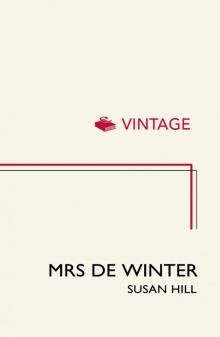 Mrs De Winter
Mrs De Winter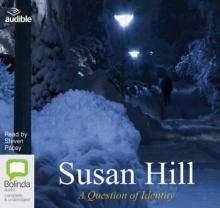 A Question of Identity
A Question of Identity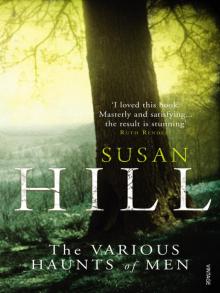 The Various Haunts of Men
The Various Haunts of Men The Pure in Heart
The Pure in Heart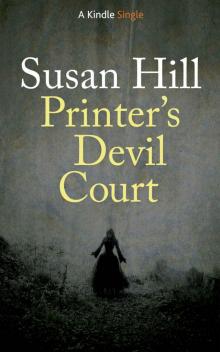 Printer's Devil Court
Printer's Devil Court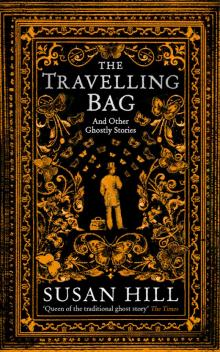 The Travelling Bag
The Travelling Bag The Risk of Darkness
The Risk of Darkness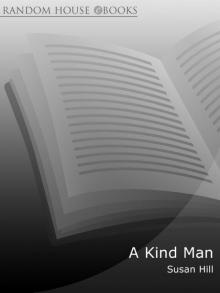 A Kind Man
A Kind Man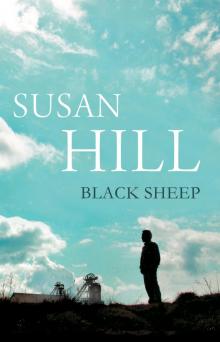 Black Sheep
Black Sheep The Betrayal of Trust
The Betrayal of Trust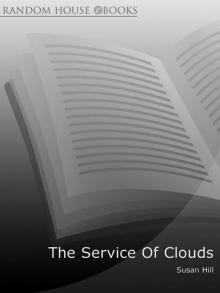 The Service of Clouds
The Service of Clouds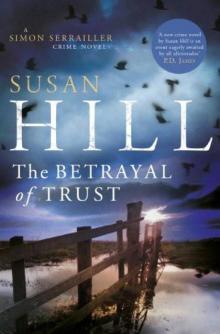 Betrayal of Trust
Betrayal of Trust The Small Hand
The Small Hand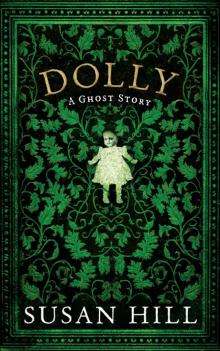 Dolly
Dolly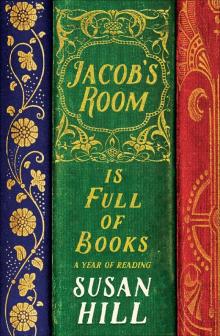 Jacob's Room Is Full of Books: A Year of Reading
Jacob's Room Is Full of Books: A Year of Reading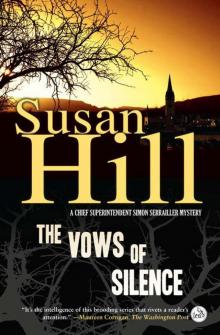 The Vows of Silence
The Vows of Silence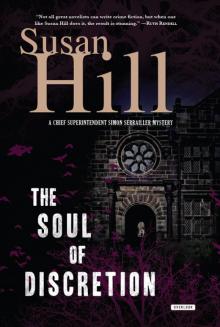 The Soul of Discretion
The Soul of Discretion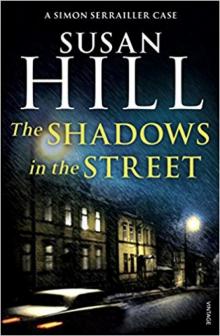 The Shadows in the Street
The Shadows in the Street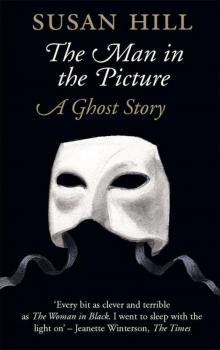 The Man in the Picture
The Man in the Picture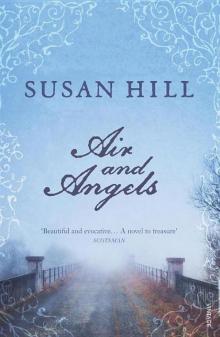 Air and Angels
Air and Angels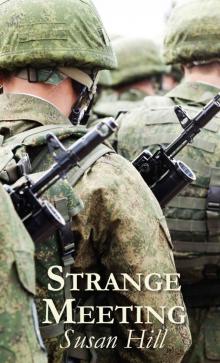 Strange Meeting
Strange Meeting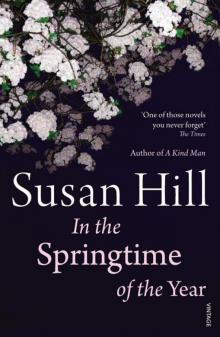 In the Springtime of the Year
In the Springtime of the Year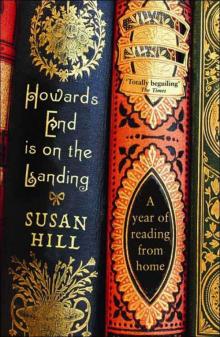 Howards End Is on the Landing: A Year of Reading From Home
Howards End Is on the Landing: A Year of Reading From Home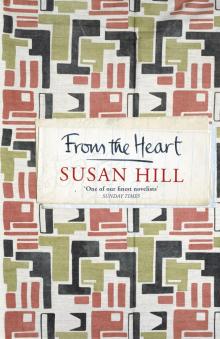 From the Heart
From the Heart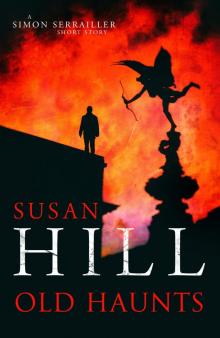 Old Haunts
Old Haunts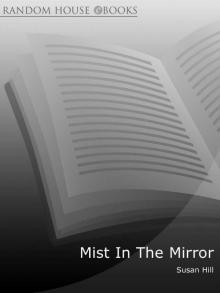 The Mist in the Mirror
The Mist in the Mirror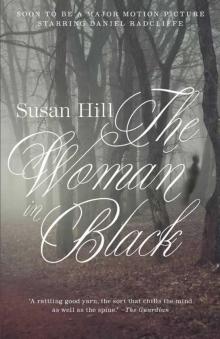 The Woman in Black: A Ghost Story
The Woman in Black: A Ghost Story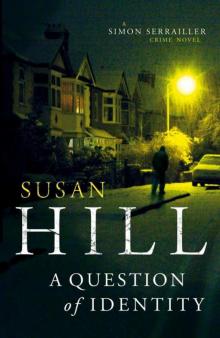 A Question of Identity (Simon Serrailler 7)
A Question of Identity (Simon Serrailler 7)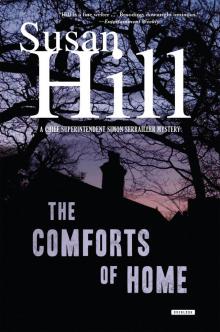 The Comforts of Home
The Comforts of Home Mist in the Mirror
Mist in the Mirror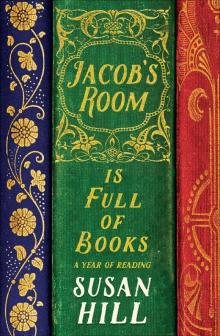 Jacob's Room is Full of Books
Jacob's Room is Full of Books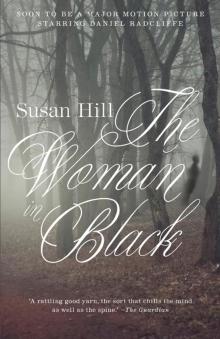 The Woman in Black
The Woman in Black Howards End is on the Landing
Howards End is on the Landing